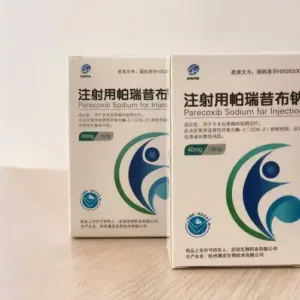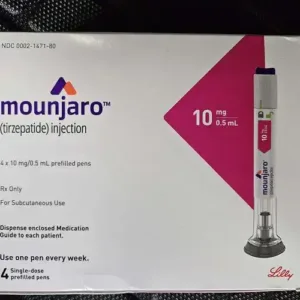Penpulimab Injection .派安普利单抗注射液
Main efficacy
This product is suitable for adult patients with relapsed or refractory classical Hodgkin’s lymphoma who have undergone at least two lines of systemic chemotherapy.
The above indications are conditionally approved based on the objective response rate and duration of response in a single-arm clinical trial. The full approval of this indication will depend on whether the confirmatory randomized controlled clinical trials being planned can confirm the significant clinical benefit of penampalimab treatment compared with standard treatment.
Dosage and Administration
This product must be used under the guidance of a physician with experience in tumor treatment.
Recommended dose
This product is administered by intravenous infusion, with a recommended dose of 200 mg, once every 2 weeks until disease progression or unacceptable toxicity.
Atypical reactions may be observed (for example, temporary tumor enlargement or new lesions in the first few months of treatment, followed by tumor shrinkage); if the patient’s clinical symptoms are stable or continuously alleviated, even if there is preliminary evidence of disease progression, based on the judgment of overall clinical benefit, it can be considered to continue treatment with this product until disease progression is confirmed.
Depending on the safety and tolerability of individual patients, it may be necessary to suspend or permanently stop the drug. Increasing or decreasing the dose is not recommended. For specific adjustment plans for suspension and permanent discontinuation of administration, please refer to Table 1. For detailed guidelines on the management of immune-related adverse reactions, please refer to [Precautions].
Table 1 Recommended adjustment plans for penampalimab treatment
Currently, there is no research data for patients with moderate to severe hepatic impairment, and it is not recommended for patients with moderate or severe hepatic impairment. Patients with mild hepatic impairment should use this product with caution under the guidance of a doctor. If it is used, no dose adjustment is required.
Renal impairment Currently, there is no research data for patients with severe renal impairment, and it is not recommended for patients with severe renal impairment. Patients with mild or moderate renal impairment should use this product with caution under the guidance of a doctor. If it is used, no dose adjustment is required.
Pediatric population
There is no clinical trial data for this product in patients under 18 years old.
Elderly population
Currently, there is limited data on the use of this product in elderly patients aged >65 years. It is recommended to use it with caution under the guidance of a doctor. If it is used, no dose adjustment is required.
Dosage method
This product should be administered by intravenous infusion under the guidance of a professional physician and diluted using aseptic techniques. The infusion should be completed within 60 minutes, and can be extended to 120 minutes for patients who cannot tolerate it. This product should not be administered by intravenous push or rapid intravenous injection.
The dilution instructions for the drug before administration are as follows: Solution preparation and infusion
Do not shake the vial.
After the vial is taken out of the refrigerator, it can be placed at room temperature (25°C or below) for up to 24 hours before dilution.
Before administration, the injectable drug should be visually inspected for suspended particles and discoloration. This product is a colorless to light yellow clear liquid without foreign matter. If visible particles are observed, the vial should be discarded.
Draw 2 bottles of this product injection solution (200 mg) and transfer them to an intravenous infusion bag containing 9 mg/ml (0.9%) sodium chloride solution to prepare a final concentration range of 1.0~5.0 mg/ml. Gently turn the diluent over to mix.
From a microbiological point of view, once diluted, this product must be used within the time specified below and must not be frozen (<0ºC) during use. The dilution stability study of this product showed that the diluted sample can be stored in the dark at 2~8ºC for 24 hours, and the 24 hours include a maximum of 6 hours under indoor light at 20~25°C (6 hours including the time of administration). After refrigeration, the vial and/or intravenous infusion bag must be returned to room temperature before use. The infusion tube used for infusion must be equipped with a sterile, non-pyrogenic, low protein binding infusion tube filter (pore size 0.22 or 0.2μm).
Do not use the same infusion tube for simultaneous administration of other drugs.
This product is for single use only. Any unused drug remaining in the vial must be discarded.
Share:
Products
Our offers
Health Classification
Let us work together to protect precious health



























